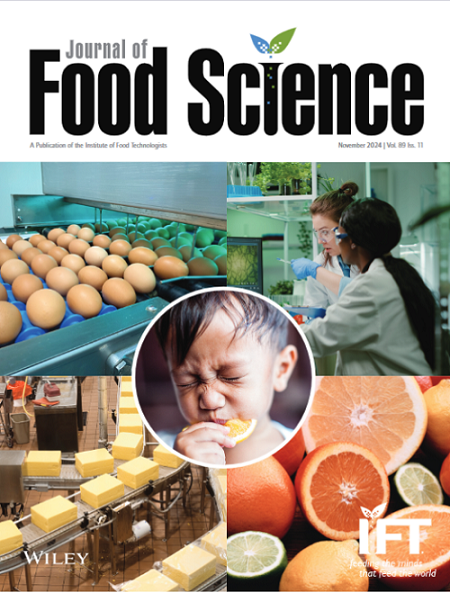Phenolic Composition, Functional Groups, In Vitro Bioactivities, and Techno-Functional Properties of Whole and Composite Bioprocessed Flours From Cowpea, Sorghum and Orange-Fleshed Sweet Potato
Abstract
The study investigated the effect of varying blending ratios of bioprocessed flours on phenolic composition, functional groups, in vitro inhibition of starch and lipid hydrolyzing enzymes, antioxidant capacity, and techno-functional properties. Raw, fermented, and germinated flours were obtained from whole-grain cowpeas, sorghum, and orange-fleshed sweet potatoes. The bioprocessed flours were blended by substituting 50% of germinated cowpea flour (GCF) with fermented sorghum (FSF) and sweet potato (FSP) flours at 10%, 20%, 25%, 30%, and 40% (w/w). An equal percentage of the bioprocessed flours (33.3% GCF:33.3% FSF:33.3% FSP, w/w) was also evaluated. Blends containing increasing levels of fermented sweet potato (10%–40%) exhibited elevated total flavonoid content (2.39–4.12 mg QE/g), total phenolic content (31–42.8 mg GAE/g), and targeted phenolic acids, including caffeic (1110–2380 µg/g), gallic (188–1820 µg/g), and vanillic (617–3480 µg/g). The 40% FSP blend showed shifted and stronger absorption peaks indicative of structural changes, with corresponding transmittance values of 47% at 1050 cm−1 (C–H in-plane and C–O stretch), 84% at 1240 cm−1 (C–C vibration), and 79% at 1400 cm−1 (OH bend). Parallel plot analysis revealed that the composite containing 50% germinated cowpea, 40% fermented FSP, and 10% FSFs had the highest apigenin and vanillic acid concentrations, along with high antioxidant capacity (50.7%) and enzyme inhibition activity against α-glucosidase (82.1%), α-amylase (32.8%), and pancreatic lipase (61.6%) compared to the individual bioprocessed flours. The same blend also showed improved solubility, better flour particle flowability, and decreased peak temperature. Overall, incorporating 40% fermented sweet potato into composite bioprocessed flours may promote synergistic enhancement of bioactive and techno-functional properties.






 求助内容:
求助内容: 应助结果提醒方式:
应助结果提醒方式:


